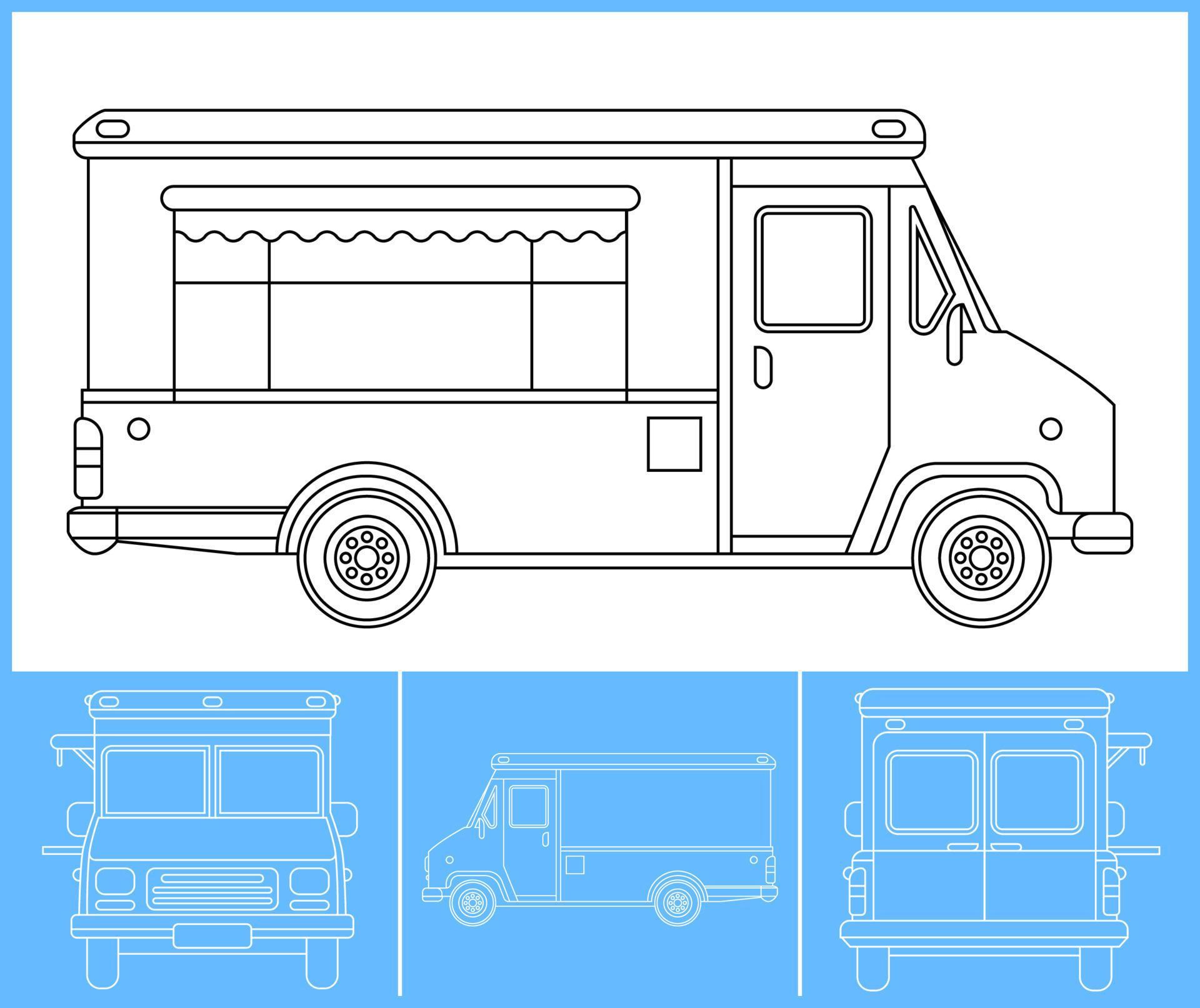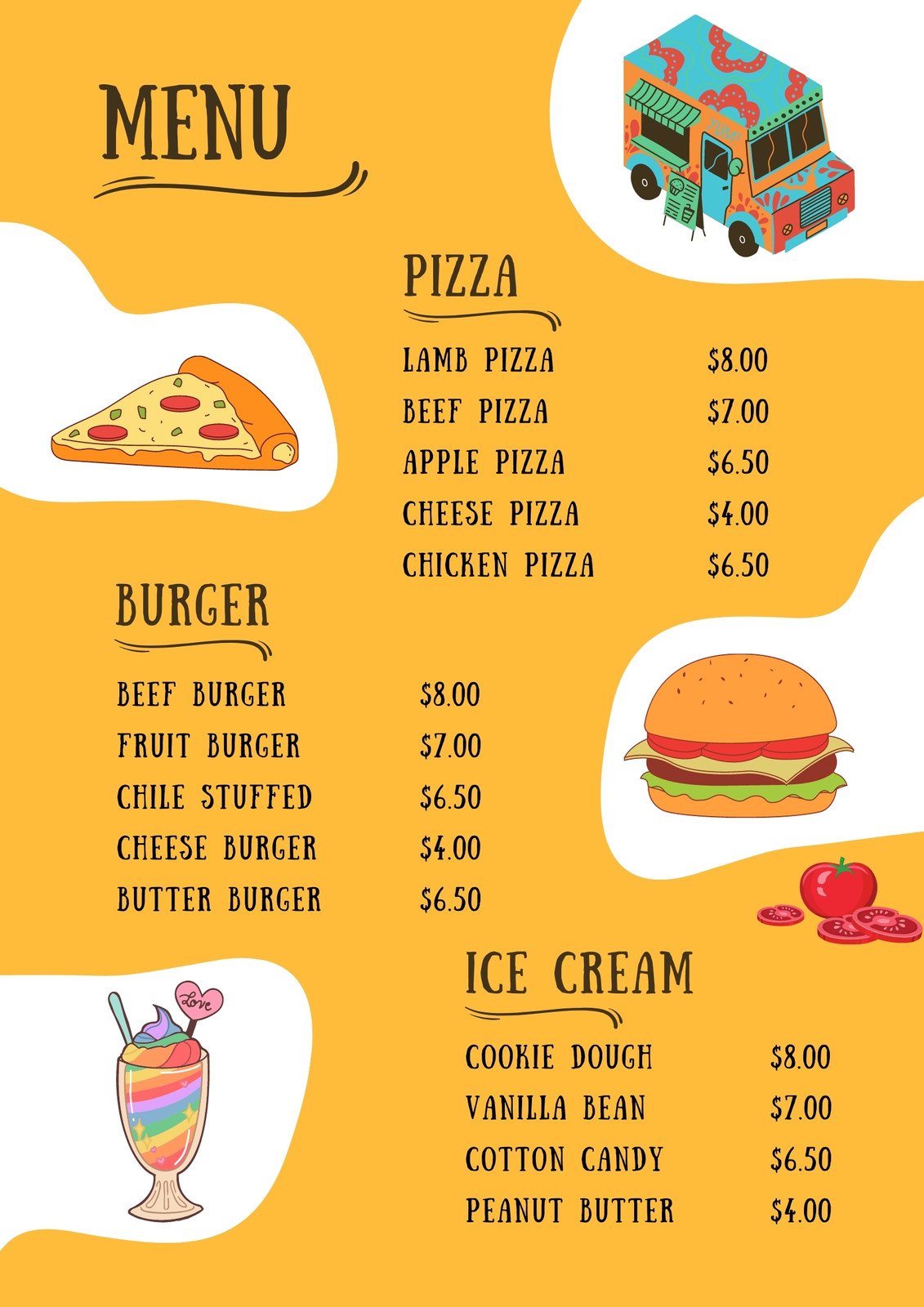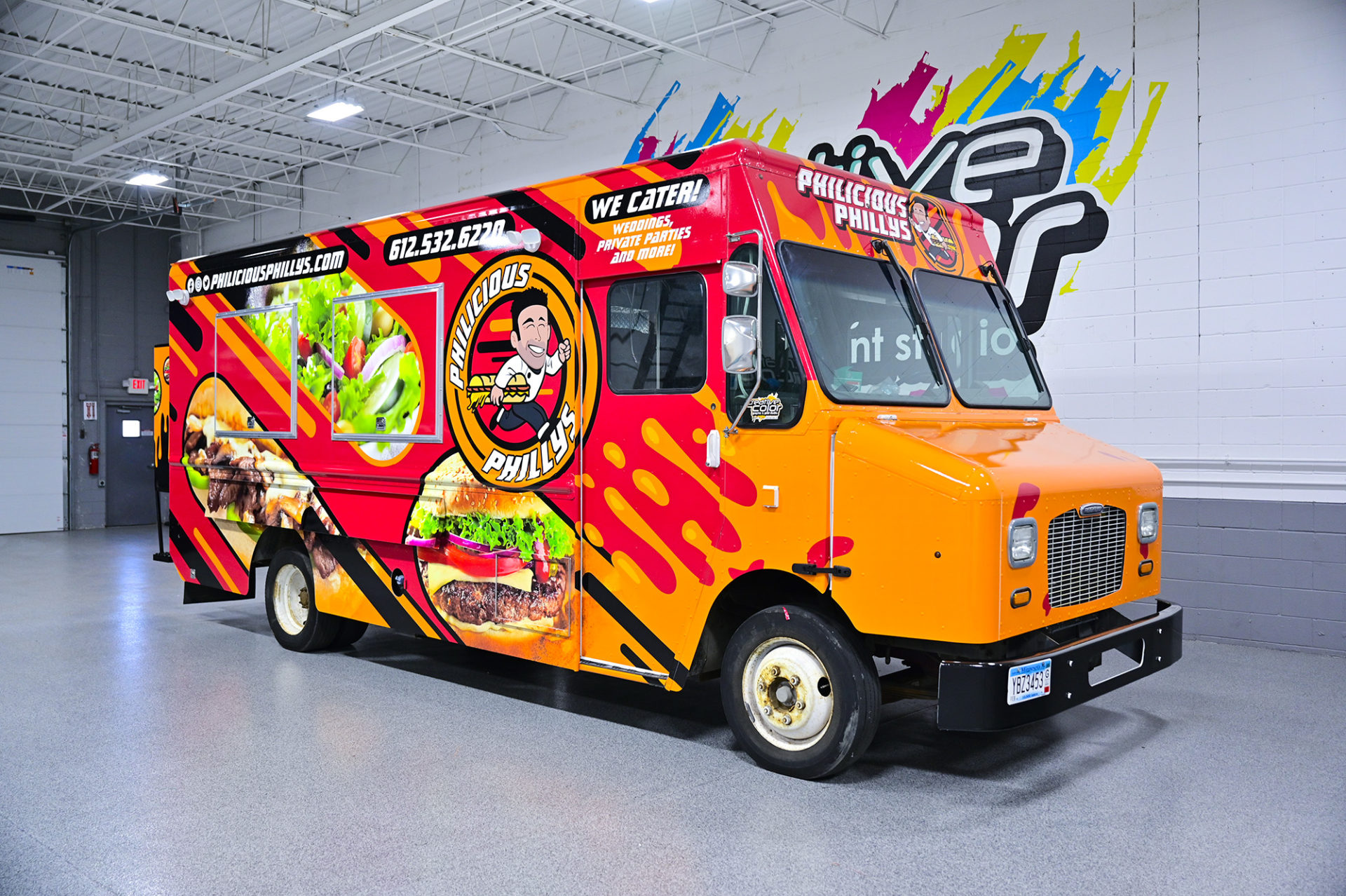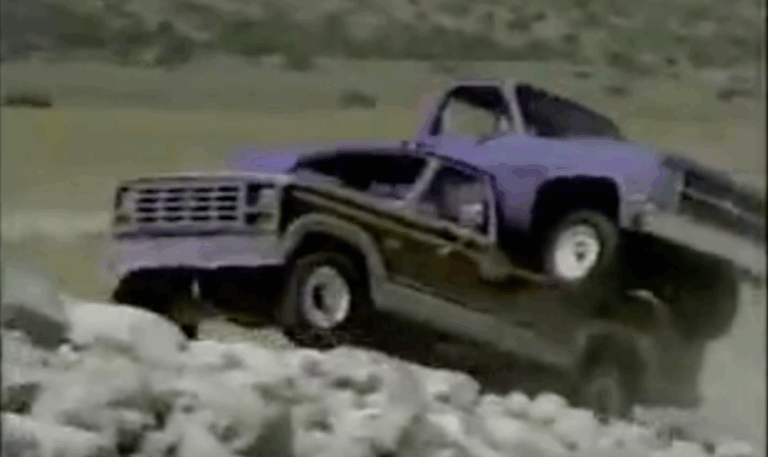Food Truck Design Template: Your Blueprint for Mobile Culinary Success
Food Truck Design Template: Your Blueprint for Mobile Culinary Success cars.truckstrend.com
In the dynamic and increasingly competitive world of mobile gastronomy, a successful food truck isn’t just about delicious food; it’s about efficient operation, regulatory compliance, and captivating aesthetics. This trifecta is challenging to achieve from scratch, which is why the concept of a Food Truck Design Template has become an indispensable tool for aspiring and established food truck owners alike. Far more than just a floor plan, a food truck design template is a comprehensive, pre-engineered framework or blueprint that meticulously outlines the layout, equipment placement, utility infrastructure, and operational workflow of a mobile kitchen.
Utilizing such a template significantly streamlines the entire process of conceptualizing, designing, and fabricating a food truck. It serves as a foundational guide, helping entrepreneurs avoid costly mistakes, ensure compliance with stringent health and safety regulations, optimize every inch of valuable space, and ultimately, build a professional and highly functional culinary vehicle. In essence, it transforms the daunting task of building a commercial kitchen on wheels into a structured, manageable project, laying the groundwork for a thriving mobile culinary business.
Food Truck Design Template: Your Blueprint for Mobile Culinary Success
Understanding the Core Concept: What is a Food Truck Design Template?
At its heart, a Food Truck Design Template is a strategic operational plan translated into a spatial design. It’s not merely a suggestion for where to put a fryer, but a detailed, integrated scheme that considers every aspect of a food truck’s functionality and aesthetics.
Key Components of a Comprehensive Template:
- Detailed Floor Plans: Scaled drawings showing the precise location of all kitchen equipment, counters, sinks, storage, and service windows.
- Equipment Specifications: A comprehensive list of recommended appliances (grills, fryers, refrigerators, freezers, ovens, coffee machines, etc.), including their dimensions, power requirements, and ventilation needs.
- Utility Schematics: Detailed diagrams for plumbing (fresh and grey water tanks, water heater, sinks), electrical systems (generator, wiring, outlets), and gas lines (propane tanks, lines, connections).
- Ventilation System Design: Crucial plans for exhaust hoods, fans, and fire suppression systems to meet health and fire codes.
- Workflow Optimization: A layout designed to ensure a logical and efficient flow of operations, from food prep and cooking to serving and dishwashing, minimizing cross-contamination and maximizing productivity.
- Material Specifications: Recommendations for durable, easy-to-clean, and food-safe materials for walls, flooring, countertops, and equipment.
- Safety & Compliance Features: Integration of fire extinguishers, emergency exits, non-slip flooring, and adherence to specific local health and fire department regulations.
- Branding Integration Guidelines: Suggestions for exterior wraps, signage placement, and aesthetic elements that can be customized to reflect the brand’s identity.


A template can range from a basic digital download offering general layouts to a highly detailed, customizable package provided by professional food truck builders or design consultants. Its value lies in providing a proven framework, reducing guesswork, and mitigating the significant risks associated with custom mobile kitchen construction.
Benefits of Utilizing a Food Truck Design Template
Leveraging a pre-designed or customizable template offers a multitude of advantages that can significantly impact the success and profitability of a food truck business.

- Efficiency & Time-Saving: Instead of spending countless hours on original design, a template provides a head start. This accelerates the build process, getting your truck on the road faster.
- Cost Reduction: By optimizing space and equipment placement, templates help minimize material waste and avoid costly redesigns or structural modifications down the line. They also prevent over-purchasing unnecessary equipment.
- Regulatory Compliance: Templates often incorporate best practices for health, safety, and fire codes, making it easier to pass inspections and obtain necessary permits. This is one of the most critical, yet often overlooked, benefits.
- Optimized Workflow & Productivity: A well-designed template ensures a logical flow for food preparation, cooking, serving, and cleaning. This ergonomic design reduces staff fatigue, improves speed of service, and enhances overall operational efficiency.
- Professional Branding & Aesthetics: Templates provide a solid base for integrating your brand identity. They ensure a professional, cohesive look both inside and out, attracting customers and reinforcing your brand image.
- Scalability & Replication: For businesses planning to expand or operate multiple trucks, a standardized template ensures consistency across units, simplifying training, maintenance, and supply chain management.
- Risk Mitigation: By following a proven design, the likelihood of critical errors in plumbing, electrical, or structural integrity is drastically reduced, saving significant money and stress.
- Enhanced Resale Value: A professionally designed and compliant food truck often retains a higher resale value due to its proven functionality and adherence to standards.
Key Elements of an Effective Food Truck Design Template
For a food truck design template to be truly effective, it must meticulously address several critical operational and structural elements:
- Kitchen Layout & Workflow: This is the heart of the template. It should define distinct zones for cold storage, dry storage, prep, cooking, plating, and washing. The layout must minimize steps, prevent cross-contamination (e.g., raw food separate from cooked food), and facilitate a smooth, continuous flow of operations. Consider the "cold to hot" principle, moving ingredients from refrigeration to prep, then to cooking, and finally to service.
- Equipment Selection & Placement: The template specifies the type, size, and quantity of all necessary cooking appliances (grills, fryers, ovens), refrigeration units, prep tables, and sinks. Placement is critical for workflow, ventilation, and safety. For instance, fryers should be near fire suppression systems, and prep areas should be convenient to storage.
- Utility Infrastructure: This includes detailed plans for water systems (fresh and grey water tanks, water pump, water heater, three-compartment sink, handwashing sink), electrical systems (generator size, wiring, outlets, lighting), and gas lines (propane tank storage, lines, shut-off valves). All must comply with local codes and safely support the chosen equipment.
- Safety & Sanitation: Non-negotiable elements include a commercial-grade exhaust hood and fire suppression system, durable non-slip flooring, easy-to-clean stainless steel surfaces, adequate lighting, first-aid kits, and clearly marked emergency exits. Templates must account for proper waste disposal and pest control measures.
- Customer Service Area: This section focuses on the service window design, menu board placement (digital or static), ordering space, and any customer waiting areas. It should be inviting, efficient, and clearly communicate your offerings.
- Branding & Aesthetics: While customizable, a good template provides guidance on exterior wrap dimensions, signage placement, lighting, and opportunities for unique branding elements that can make your truck stand out.
- Storage Solutions: Beyond the kitchen, templates consider general storage for dry goods, cleaning supplies, and packaging materials. Efficient use of vertical space and integrated cabinetry is often key in compact food truck environments.
How to Choose and Customize a Food Truck Design Template
Selecting and adapting the right food truck design template requires careful consideration of your unique business model and local regulations.
- Define Your Concept & Menu: Your menu dictates your equipment needs. A pizza truck needs a large oven, while a taco truck requires griddles and a robust prep area. Be specific about your culinary offerings first.
- Research & Budget: Templates vary widely in cost and complexity. Decide if a basic downloadable plan suffices or if you need a professional custom design service. Factor in the cost of customization.
- Understand Local Regulations: This is paramount. Health department and fire marshal requirements vary significantly by city and state. Ensure your chosen template can be adapted to meet these specific local codes before committing. Consult local authorities early in the process.
- Evaluate Workflow & Efficiency: Walk through the template virtually or on paper. Imagine your busiest service. Does the layout make sense? Are there potential bottlenecks? Can multiple staff members work comfortably without hindrance?
- Consider Materials & Durability: Look for templates that recommend commercial-grade, durable materials like stainless steel for surfaces, and non-slip, easy-to-clean flooring. These materials ensure longevity and compliance.
- Assess Ventilation & HVAC: Adequate ventilation is crucial for safety and comfort. Ensure the template includes robust exhaust systems and consider climate control for extreme weather.
- Branding Integration: While a template provides structure, ensure there’s ample scope for integrating your unique brand identity through wraps, signage, and interior finishes.
- Seek Professional Consultation: For complex builds or if you’re unsure about compliance, engage with experienced food truck builders, specialized designers, or even a local health inspector for pre-approval of your design. Their expertise can save you from costly mistakes.
Types of Food Truck Design Templates
Food truck design templates can be categorized based on various factors, allowing for targeted solutions:
- Cuisine-Specific Templates: These are tailored to the unique equipment and workflow needs of particular culinary styles. Examples include:
- Pizza Truck Template: Features a large pizza oven (wood-fired or gas), dough prep area, refrigeration for toppings, and often a smaller service window.
- Taco/Grill Truck Template: Emphasizes griddles, flat-top grills, multiple prep stations, and extensive refrigeration for fresh ingredients.
- Coffee/Beverage Truck Template: Focuses on espresso machines, blenders, dedicated water lines, syrup storage, and often a lower service counter.
- BBQ Truck Template: Incorporates smokers (sometimes trailer-mounted), large prep areas for meat, and robust ventilation.
- Size-Specific Templates: Designed for different vehicle chassis sizes:
- Small Truck/Van Template: Maximizes space in compact vehicles, often relying on multi-functional equipment.
- Standard Truck Template: For typical 16-20 ft trucks, offering a balance of space and maneuverability.
- Large Truck/Trailer Template: For longer vehicles or trailers, allowing for more extensive equipment, multiple workstations, and higher volume.
- Budget-Tiered Templates: Reflecting different levels of investment:
- Basic/DIY Template: Focuses on essential equipment and minimal frills, suitable for startups on a tight budget.
- Mid-Range Template: Offers a good balance of quality equipment and efficient layout for growing businesses.
- Premium/High-Volume Template: Designed for maximum efficiency, high-grade equipment, and advanced features for large-scale operations or catering.
- Workflow-Optimized Templates:
- Quick-Service/Single-Operator Template: Streamlined for speed and simplicity, often for a limited menu.
- High-Volume/Multiple-Operator Template: Designed for multiple chefs working simultaneously, with distinct zones to prevent congestion.
Challenges and Solutions in Implementing a Design Template
While templates offer immense benefits, implementing them isn’t without its hurdles.
- Challenge: Regulatory Compliance Variations. Health and fire codes differ significantly even between neighboring cities or counties.
- Solution: Begin by contacting your local health department and fire marshal. Get their specific requirements in writing and ensure your chosen template can be adapted to meet every single one. Professional food truck builders are invaluable here.
- Challenge: Budget Constraints. Customization and high-quality equipment can quickly inflate costs beyond initial estimates.
- Solution: Prioritize essential equipment. Consider leasing or buying used (but inspected) equipment for non-critical items. Phased build-out, where certain less critical features are added later, can also help.
- Challenge: Space Limitations vs. Menu Ambition. Fitting all desired equipment into a confined space while maintaining workflow can be tough.
- Solution: Streamline your menu to match the truck’s capacity. Opt for multi-functional equipment (e.g., a griddle that also serves as a charbroiler). Utilize vertical storage solutions and custom-built cabinetry.
- Challenge: Workflow Bottlenecks. A design might look good on paper but create operational snags in practice.
- Solution: Conduct a "dry run" with your team (or even just yourself) in the imagined space. Simulate busy periods. Identify potential points of congestion or inefficient movements. Get feedback from experienced cooks or food truck operators.
- Challenge: Power/Utility Issues. Inadequate power, water, or gas systems can cripple operations and be dangerous.
- Solution: Invest in a professional electrical and plumbing design specific to your equipment’s demands. Ensure your generator size is sufficient and your propane system is professionally installed and certified. Don’t cut corners here.
Practical Advice and Actionable Insights
- Start with Your Menu: Your menu defines your equipment, which then defines your layout. Don’t reverse this order.
- Prioritize Compliance: This is non-negotiable. An illegal truck is a non-operating truck. Get regulatory approval before significant investment.
- Don’t Skimp on Ventilation and Fire Suppression: These are critical safety systems that protect your staff, your customers, and your investment.
- Think About Cleaning and Maintenance from Day One: Design with easy-to-clean surfaces, accessible components, and proper drainage. A clean truck is a compliant and efficient truck.
- Invest in Quality Equipment: While budget is a factor, commercial-grade equipment built for heavy use will save you money and headaches in the long run.
- Get Professional Help for Critical Systems: Electrical, plumbing, and gas installations are not DIY projects. Hire certified professionals.
- Budget for Contingencies: Always add 10-20% to your estimated budget for unforeseen costs.
- Visualize Your Operations: Before finalizing, imagine yourself working a full, busy shift in the truck. Is it comfortable? Is it efficient?
Food Truck Design Template: Estimated Pricing Guide
The "price" of a Food Truck Design Template isn’t a single fixed figure, as it encompasses a range of services and products from DIY solutions to full professional consultations. The table below outlines typical costs associated with acquiring or developing a food truck design template.
| Service/Product Category | Description | Estimated Price Range (USD) | Key Inclusions | Ideal For |
|---|---|---|---|---|
| Basic Digital Template Pack | Pre-designed, generic floor plans and equipment lists for common truck sizes/concepts. Downloadable files (PDF, basic CAD). | $50 – $250 | Simple layouts, general equipment suggestions, basic space planning ideas. | DIY enthusiasts, early-stage research, very tight budgets, understanding basic layouts. |
| Customizable Template Software/Tool | Online platforms or software offering drag-and-drop elements to create your own template from pre-loaded assets and libraries. | $200 – $800 (one-time or annual license) | Interactive design interface, extensive equipment library, basic utility placement tools. | Entrepreneurs wanting more control over design, some self-design experience, iterative planning. |
| Mid-Tier Custom Template Design | Professional design service creating a tailored template based on your specific menu, truck size, and basic requirements. | $1,500 – $4,000 | Detailed floor plans, equipment specifications, basic electrical/plumbing schematics, 2D renderings. | Serious startups with specific menu needs, moderate budget, seeking professional guidance. |
| Premium Custom Template & Consultation | Comprehensive design service including in-depth consultations, 3D renderings, detailed engineering plans, and thorough regulatory compliance checks. | $4,000 – $10,000+ | All mid-tier inclusions plus 3D walkthroughs, advanced utility diagrams, material specifications, professional oversight for compliance. | High-end concepts, complex menus, multi-truck operations, prioritizing maximum compliance and efficiency. |
| Integrated Design & Build Package | The design template is included as part of a full food truck fabrication service provided by a specialized builder. | (Varies significantly, typically $50,000 – $250,000+ for the entire truck) | Full custom design, fabrication, and outfitting of the truck, often including permitting assistance. | Those seeking a complete, ready-to-operate solution from a single vendor, valuing convenience and expertise. |
Note: The prices above are for the design template or design service itself, not the cost of building or purchasing the actual food truck, which is a much higher investment.
Frequently Asked Questions (FAQ)
Q1: What exactly is a food truck design template?
A1: A food truck design template is a pre-designed, comprehensive blueprint or framework for the layout and functionality of a mobile kitchen. It includes floor plans, equipment placement, utility schematics, and considerations for workflow, safety, and compliance.
Q2: Do I really need a design template for my food truck?
A2: While not strictly mandatory in all cases, a template is highly recommended. It saves time, reduces costs by preventing errors, ensures regulatory compliance, optimizes workflow, and helps create a professional and efficient mobile kitchen.
Q3: Can I customize a pre-made template?
A3: Absolutely! Most templates are designed to be customizable. You can adjust equipment choices, material finishes, and branding elements to suit your specific menu, budget, and aesthetic preferences. However, significant structural changes may require professional consultation.
Q4: How do I ensure my template meets local health codes?
A4: The most crucial step is to consult your local health department and fire marshal early in the design process. Provide them with your template, and be prepared to make adjustments based on their specific requirements. Many professional template providers also build compliance into their designs.
Q5: What’s the difference between a template and a full custom design service?
A5: A template provides a foundational framework that can be adapted. A full custom design service, often provided by architects or specialized food truck builders, creates a unique design from scratch tailored precisely to your every need, often involving more in-depth engineering and regulatory navigation, which typically comes at a higher cost.
Q6: How much does a food truck design template cost?
A6: The cost varies widely based on its complexity and the level of service. Basic digital templates can range from $50-$250, while professional custom design services can cost from $1,500 to over $10,000. Refer to the "Estimated Pricing Guide" table above for more details.
Q7: What are the most critical elements in a template?
A7: The most critical elements are workflow optimization (efficient movement), proper utility infrastructure (electrical, plumbing, gas), and robust safety/sanitation features (fire suppression, ventilation, easy-to-clean surfaces). These directly impact operational efficiency, safety, and regulatory compliance.
Q8: How long does it take to get a design template?
A8: A basic digital template can be downloaded instantly. A mid-tier custom template might take 1-3 weeks, while a premium, highly detailed custom design with consultations and 3D renderings could take 4-8 weeks or more, depending on the complexity and designer’s availability.
Concluding Summary
A Food Truck Design Template is more than just a drawing; it is the strategic cornerstone of a successful mobile culinary venture. By providing a structured, efficient, and compliant framework, it empowers entrepreneurs to navigate the complexities of food truck construction with confidence. From optimizing workflow and ensuring regulatory adherence to fostering strong brand identity, a well-chosen and customized template saves time, reduces costs, and significantly mitigates risks. In a world where mobile eateries are rapidly becoming culinary landmarks, a robust design template is not just an asset—it’s the fundamental blueprint for achieving your mobile culinary dreams.





